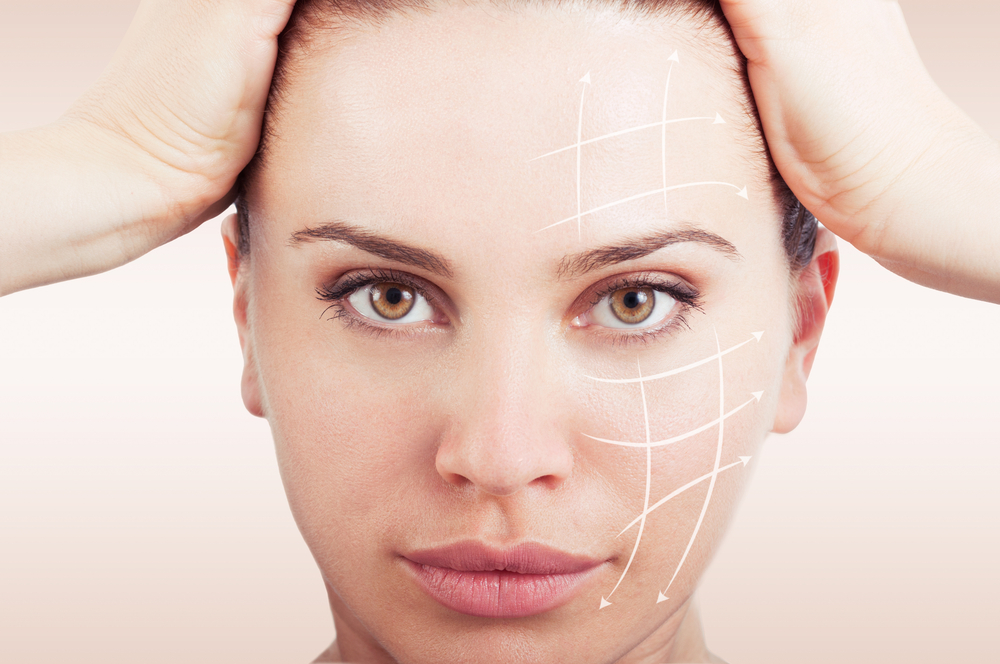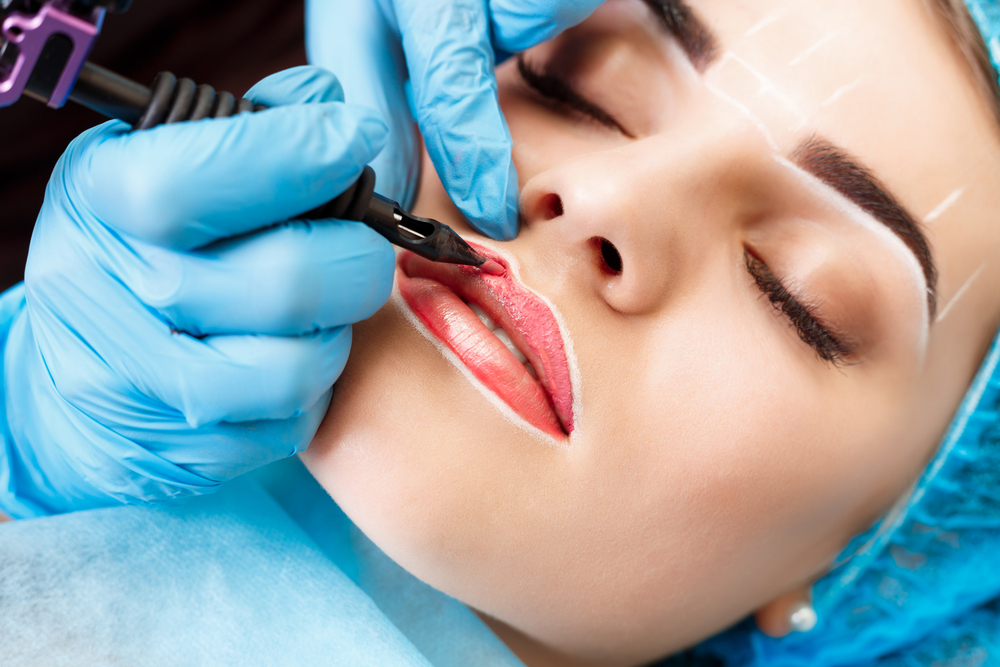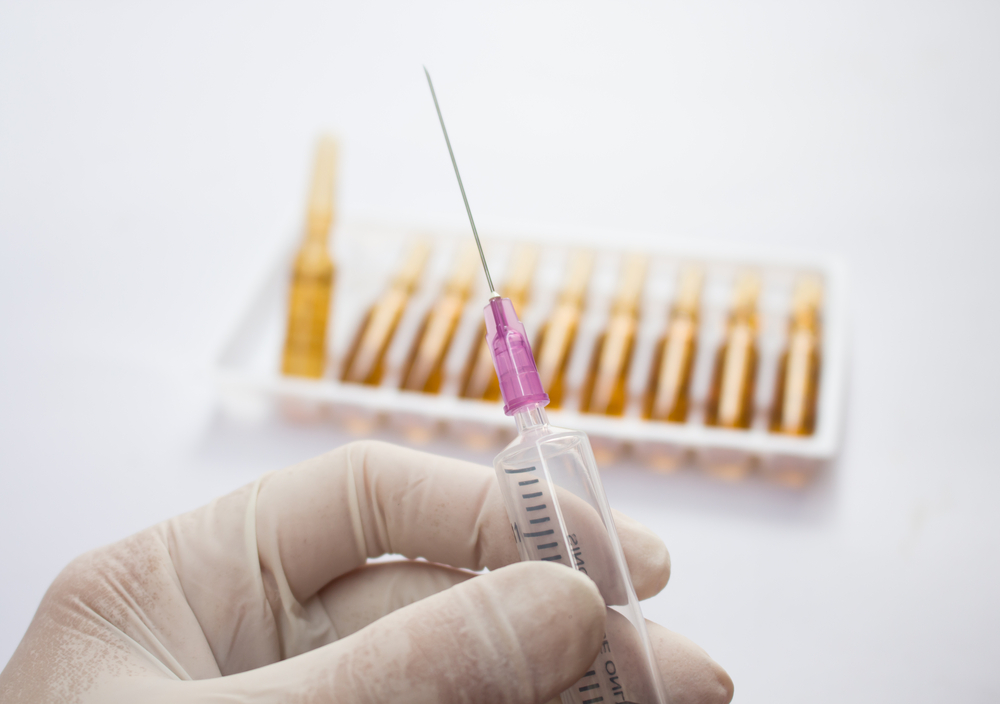This new procedure — using skin-suspending strings — may soon be as popular as fillers for fixing sagging skin. Just don’t call it “a thread lift.”
In this day of technological innovations in cosmetic surgery, one question is on many prospective patients’ lips: why go under the knife if I don’t have to? Many of the newest procedures are virtually pain free, and produce the results of a facelift without the incisions and recovery time.
In fact, according to the American Society for Aesthetic Plastic Surgery (ASAPS) the numbers of people getting traditional facelifts has increased by only 0.5% since 2015. Perhaps that’s because they are looking into less invasive, more time effective options in lieu of complex surgical procedures. And many doctors are picking up on the trend.
In a recent interview with Town & Country magazine, Beverly Hills celebrity dermatologist Dr. Howard Lancer predicted “that in ten years the surgical facelift will be a thing of antiquity.”
That couldn’t happen without other procedures waiting to become the future of aesthetic medicine.
What is the Silouhette InstaLift?
The Silouhette InstaLift is touted as the “30 minute lunchtime facelift” and FDA-approved in April 2015 for use in the mid-face, this minimally invasive approach uses absorbable sutures with tiny bi-directional cones to lift and suspend the deeper layers of the skin. The suture and cone material are both made of glycolide and L-lactide (PLGA).
An added bonus of this approach is that as the small cones slowly dissolve over time, the tissue heals around them, stimulating collagen production, which makes the skin firmer and thicker. Even better, the results can be seen instantly.
How long have you been doing the Sihouette InstaLift?
“I’ve been doing the procedure around 10 months,” says New York facial plastic surgeon Dr. Yael Halaas. “I was the first facial plastic surgeon in the country to be trained by the company. I am currently training other surgeons through formal continuing medical education programs.”
Dr. Jessie Cheung, an Illinois based cosmetic dermatologist, says, “I’ve been doing the Silhouette InstaLift since September 2016, when the product became available in my area.”
How does the Silhouette InstaLift work?
Cheung explains that the procedure starts with assessing and measuring the patient’s face.
“A local anesthetic is injected into the insertion points on the cheeks, and then the needle with attached suture is threaded under the skin to the exit point. Once the cones are in place, the needles are snipped off the sutures, and procedure is complete,” says Cheung. “The downtime is minimal — there may be some bruising and swelling, but you really can go back to work immediately after the treatment.”
“The procedure is based on Silhouette Soft sutures, which have been in use in Europe for over five years,” says Halaas.
“Simply put, the dissolvable sutures with bi-directional cones to hold the skin in an elevated position, will lift, project, and redrape the skin to contour the face,” says Cheung. “As the sutures are absorbed, they stimulate collagen growth, which helps to reflate a youthful cheek and lift sagging jowls.”
There may be some bruising and swelling, but you really can go back to work immediately after.
Dr. Jessie Cheung
Silhouette’s InstaLift Before and After
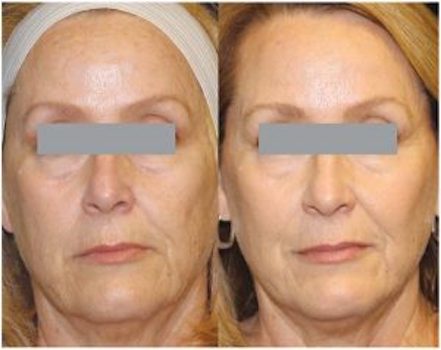
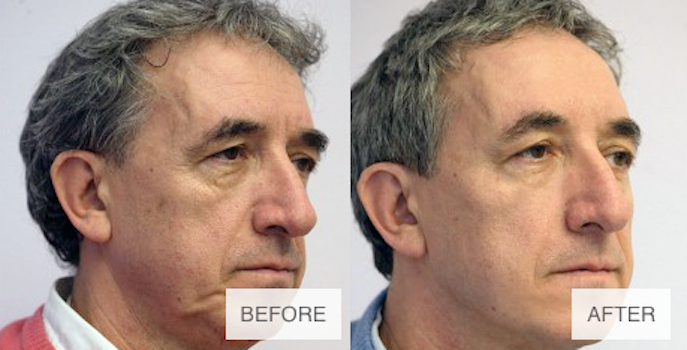
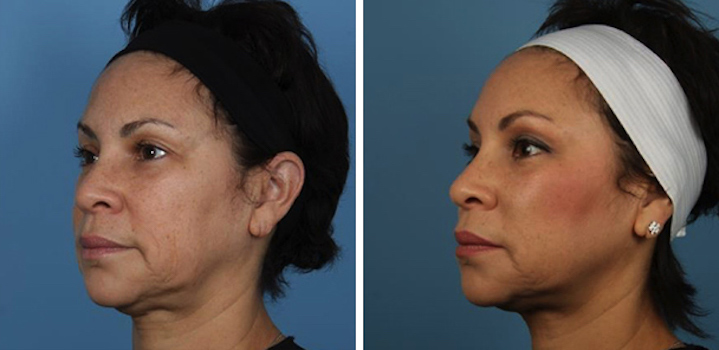

Why did you add the lunchtime facelift to your patient offerings?
“I added this procedure to my array of services because these lifting sutures are absorbable and have no barbs,” says Halaas. “It’s a quick and minimally invasive procedure and a great alternative to filler because it rejuvenates the face without repeatedly adding volume, and it is a good option for patients that don’t have any recovery time for an actual facelift surgery.”
Cheung concurs. “The InstaLift offers an entirely new solution to an old problem — excess sagging skin,” she says. “Instead of turning away patients who are dissatisfied with fillers and may need a facelift, I can now reposition excess skin while also creating volumetric projection.”
How long does the procedure take to perform?
“It takes approximately half an hour, depending on how many threads you are putting in,” says Halaas. “A pair of three threads takes on average 30 to 45 minutes, including prep time.”
As is the case with most procedures, with experience comes efficiency. “I can now complete a full face treatment in 20 minutes, including the prep time,” says Cheung. “Once your hands get used to the procedure, it’s all about muscle memory.”
How painful is it?
Halaas says that the procedure is done under local anesthesia so patients feel little to no pain — similar to getting fillers, in the physician’s office.
“Moving the sutures into place may causes a strange sensation, but t worst discomfort is the numbing injection,” says Cheung.
What about recovery, side effects, and potential complications?
According to Thermi, the company that created the InstaLift, edema or bruising may occur after the treatment. Sometimes, a slight depression or skin irregularity may also appear at the insertion point, but these typically disappear a few days after treatment.
Thermi’s post-procedure recommendations are:
- Apply cold packs immediately after procedure if required (should be wrapped to avoid direct contact with skin and insertion points).
- Acetaminophen may be taken in case of pain (2-3 days).
- Refrain from applying make-up for as long as possible. Make-up may be gently applied after a minimum of 24 hours.
- Sleep face-up, elevated on pillows for 3-5 nights.
- Do not rub face aggressively when washing, shaving, and drying face for 5 days; be gentle.
- Avoid excessive neck and facial movements for 2 weeks.
- Avoid exposure to direct sunlight and UV light for 2 weeks.
- Do not use saunas for 3 weeks.
- Avoid dental surgery for 3 weeks.
- Avoid facial or face-down massages and facial aesthetic treatments for 4 weeks.
- Avoid participating in high impact sports (for example: running) for 2 weeks.
What other options provide the same or similar results?
According to Halaas, “fillers can fill in some of the deficits in the face and hide the jowls, instead of lifting them, by adding volume.”
“Minimally invasive procedures such as ThermiTight or Infini can achieve some of the tightening results in the jaw-line and neck,” Halaas adds. “All methods in combination can really maximize results. For patients that want the ultimate procedure for lifting of neck, tightening of the jaw line, and even cheeks, surgical facelifts will have the most longevity and dramatic improvement.”
Cheung feels the same way. “I would have to perform a combination of fillers and lasers to achieve similar results. The problem with using fillers to create projection is that you may make the skin appear heavy. Laser skin tightening requires months to see results, and many patients don’t want to wait that long.”
Wasn’t the InstaLift banned in the United States?
“Silhouette InstaLift was never banned in the United States,” Halaas clarifies. “Contour Thread Lifts were banned. Those Thread Lift sutures were made out of non-absorbable barbed sutures with sharp points that irritated the skin and required over-correction. This led to a high complication rate and unhappy patients.”
According to Halaas, there was also a lack of formal training programs for medical practitioners on how to use the threads properly.
“The previous generation of threads lost FDA-approval for reports of scarring,” adds Dr. Cheung. “Those threads were permanent, and many poorly trained providers were using them incorrectly.”
As for the Silhouette sutures, that is a very different story.
“The Silhouette sutures are well designed from years of planning, do not require over-correction, dissolve without issue, and have an excellent safety profile,” says Halaas. “In Europe, over 350,000 sutures have been used with a very low complication rate (less than 1%), and no major complications reported at all.”
The Silhouette sutures have an excellent safety profile.
Dr. Yael Halaas
“I think that some patients may be hesitant because of the issues with the previous generation of threads, but once they are educated, it’s an easy choice,” says Cheung. “They like the idea that it’s their collagen that grows in while the sutures are providing structural support. They also get the concept that those sutures lift and project more effectively than fillers. And the fact that these sutures dissolve over time makes it less scary. The results are a home run, given that there is minimal downtime, and just local anesthesia.”
Despite the numerous accolades from plastic surgeons and dermatologists, there are detractors toward the procedure, including Dr. Patricia Wexler, a New York City based dermatologist who told Town & Country that “there’s no guarantee that even the new, absorbable materials will dissolve at the same time, which could lead to unpleasant facial drooping or asymmetry.”
Dr. Daniel C. Mills, the former President of the American Society for Aesthetic Plastic Surgery, is concerned about the longevity of the procedure. In an interview with Zwivel, Dr. Mills said that “a traditional facelift is the gold standard because it has long lasting results. The Silhouette InstaLift is a temporary improvement to the area where the thread is placed; however it doesn’t help with volumizing the face and tightening it for an extended period. It does have complications, the biggest one being symmetry. Results from Silhouette InstaLift last 12 to 18 months while traditional facelift results last ten years. The cost adds up if a patient gets a Silhouette InstaLift every year.”
Dr. Mills does see benefits for some patients, however.
“For the right candidate the Silhouette InstaLift can be wonderful. It is ideal for patients looking for a temporary improvement. They need to be realistic about their expectations from the procedure. I recommend patients consult with a board-certified plastic surgeon who has experience performing both noninvasive procedures and the traditional facelift because they can select the treatment approach that is ideal for the patient.”
How much does the Silhouette Instalift cost?
On average, the fee for Silhouette InstaLift is $2,750, vs. the average cost of a facelift of $7,286 in 2015, according to ASAPS.
Why would a patient select the InstaLift over other procedures?
Because of the reviews. Take it from the mouth of Dr. Halaas’ and Dr. Cheung’s satisfied patients:
“I definitely see a difference in pictures, and it’s been less than two weeks. Compared to fillers, threading is far better because it lifts the right areas. And people can’t tell that I had anything done – I look natural and I went back to work the same day. I’m excited to see how much more this improves over time.”
– Dr. Cheung’s patient, Amanda, age 50
“I had the procedure done only five months ago (with no downtime) and my naso-labial folds and jowls have disappeared. It’s hard to believe that it’s not magic or science fiction when you actually feel your face being pulled back to the position you remember from your younger days. I’m hopeful for long-lasting results, because how I feel and look now is more than worth the investment.”
– Dr. Halaas’s patient, female, age 48
“A huge part of the patient appeal comes from the immediate outcome with results getting better with time. They like that it is minimally invasive and quick. It’s also less expensive than a surgical facelift,” says Dr. Halaas.
Speaking of lifts, reportedly, Silhouette’s parent company, Sinclair, is looking into the possibility of lifting other body parts, including brows, breasts, and knees.
Now that’s a thread worth following!





